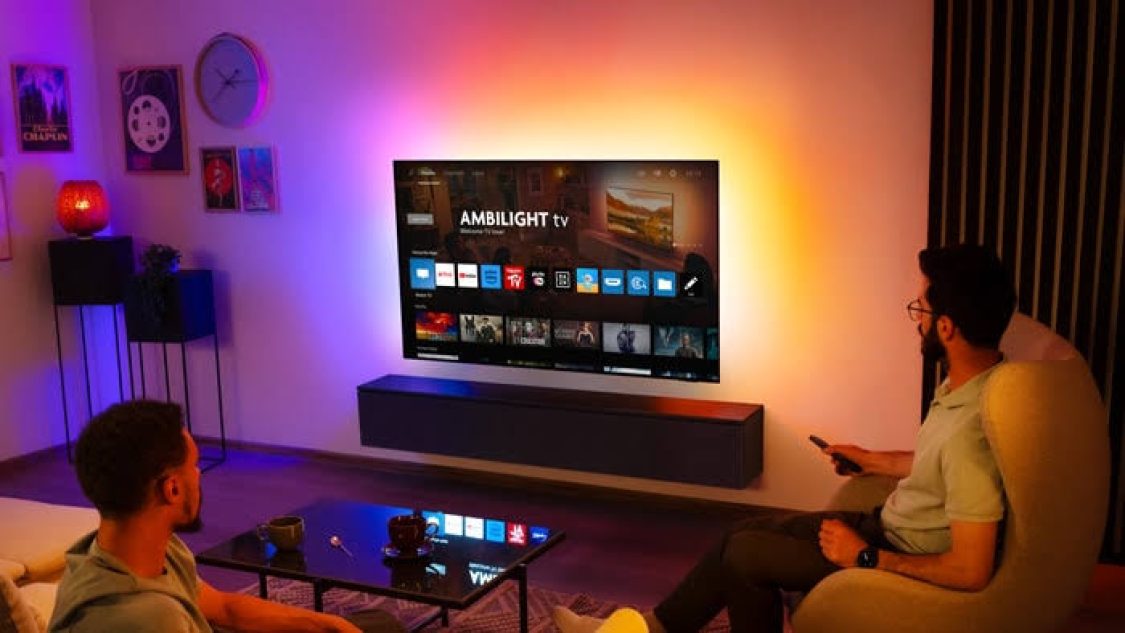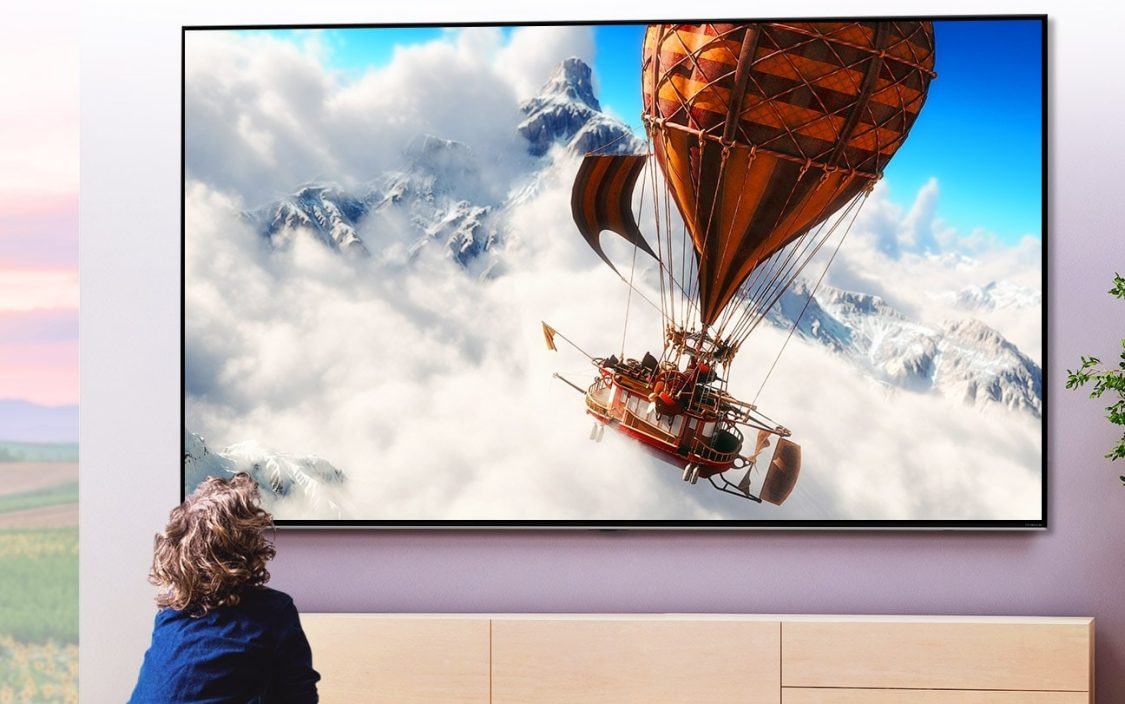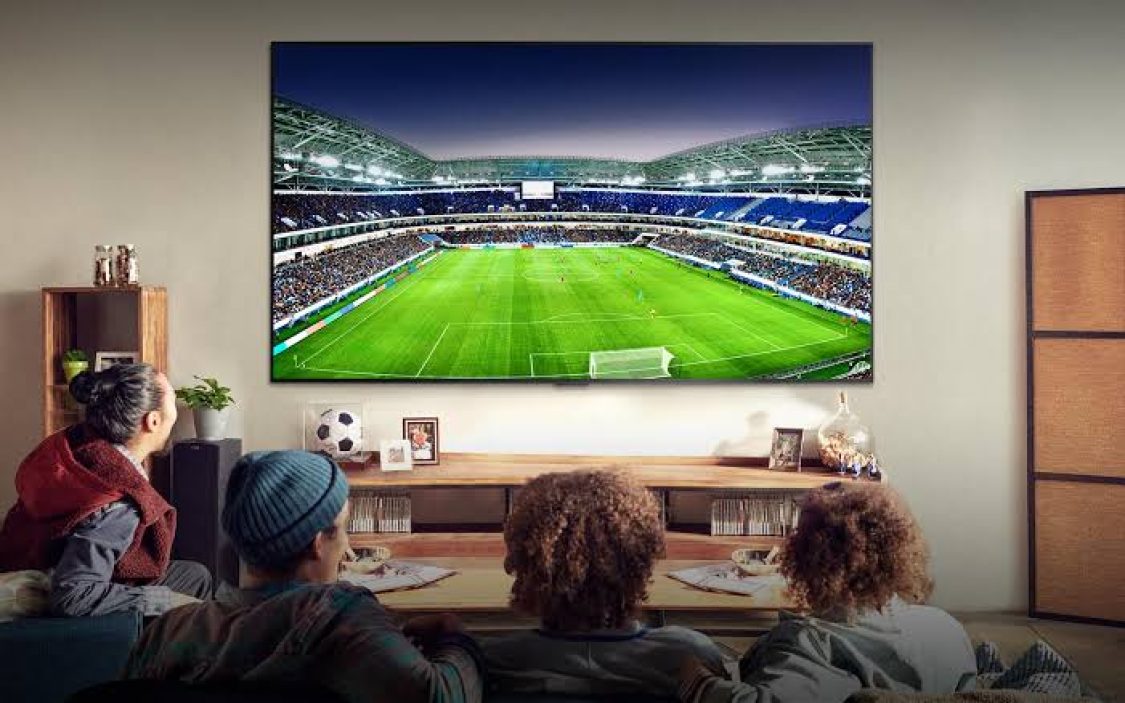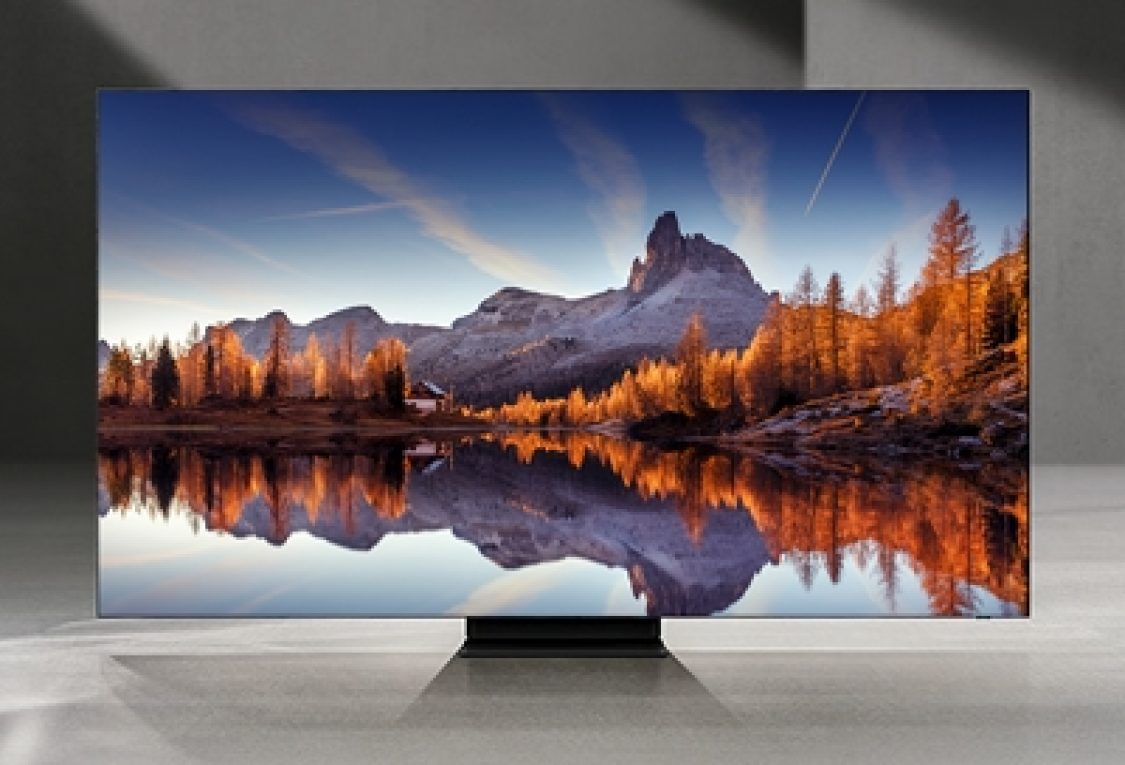Everything You Need to Know Before Buying a TV

A TV is an item you aspire to invest in only once every decade. The emphasis on the screen being the key aspect allows you to remain satisfied with you’re acquisition, even as advancements occur in the industry. If your previous TV indeed served you for a decade, it’s likely you’re not updated with the current developments in TV. You might find yourself puzzled by the influx of new brands, terminology, and extensive selection now on the market.
If this description fits your situation, you’re in the right location. We have curated a comprehensive guide for your reference, covering essential factors to consider prior to finalizing your buying a TV. What you require from your TV will significantly influence your choices, so weigh your options thoroughly to determine what suits you best. Additionally, if you intend to use your new television until 2029, we will assist in selecting the necessary features to ensure it remains relevant over time.
How do LCD, LED, QLED, and OLED differ from one another?
The screen is, undoubtedly, the most vital feature in any television. There is a plethora of factors to examine regarding panel technology. While outdated technologies like plasma or typical LCD are no longer applicable, newer screen options such as OLED and QLED may bewilder prospective buyers. We have omitted technologies that aren’t commonly found, such as plasma and the emerging but not yet widely available microLED. The basics of each popular screen technology are listed below.
LCD TVs:
Following the decline of cathode ray tube (CRT) technology, the next significant advancement was liquid crystal display, commonly known as LCD. The traditional variety of LCD employs a standard liquid crystal display alongside CCFL backlighting. Although this version is cheaper, it lacks efficiency in energy use compared to LED backlighting, resulting in a dimmer display.
Although this may seem perplexing, it’s important to note that CCFL-backlit LCD TVs have nearly become extinct, making it extremely difficult to purchase one today. We include this explanation solely to clarify the distinctions between CCFL and LED backlighting for LCD screens.
LED or LED-LCD or LED-backlit TVs:
The LED-LCD, or simply LED, is currently the most widely used screen technology for televisions. This liquid crystal display is much the same, but it has backlighting from LEDs (light emitting diodes). This advancement not only contributes to a slimmer design with narrower bezels surrounding the screen but also enhances brightness during viewing. Additionally, it is much more energy-efficient than CCFL backlighting, which makes it the preferred choice in today’s market.

Most customers these days are likely to choose an LED-LCD television. The economical choices currently use this technology, making it appealing to those at the entry level and to individuals seeking great value. It has also become relatively inexpensive to produce large LED-LCD displays, so the lowest-priced large televisions will feature this type of screen.
Quantum Dot:
Commonly referred to as QLED, a term primarily popularized by Samsung, this is a comparatively recent display technology that utilizes quantum dots, a specific kind of semiconductor, to create colored light. This incorporates a layer of quantum dots claimed to enhance brightness and color on the television. Quantum Dot LED displays are said to surpass traditional LED-LCD displays, achieving performance levels that are nearly on par with OLED displays in several respects.
This display technology is still relatively new, not commonly found, and can be quite costly. Samsung strongly markets this for its premium television models, typically pricing them slightly less than OLED TVs. However, Samsung is not the sole provider of this technology; Vu also offers a quantum dot television model in India.
OLED:
Often regarded as the highest quality screen technology currently available, OLED, which stands for Organic Light Emitting Diode, is also the priciest option. This technology employs individual organic pixels that generate light when an electrical current flows through them. OLED televisions are renowned for their superior black levels, as the black areas of the screen can simply turn off while other sections remain illuminated.

Purchasing an OLED TV isn’t a cheap endeavor, and it’s necessary to allocate a considerable budget if you wish to acquire one. Nevertheless, you are investing in what many consider to be the finest commercially available screen, assuring you of enhanced black levels, colors, and contrast compared to any other television type. However, a drawback of OLED panels is the potential for burn-in, which may leave subtle color remnants visible on the screen after extended use.
Screen Size — Is Bigger Always Better?
In many cases, a larger screen is preferable when selecting television size. Nonetheless, it’s important to avoid excessive neck movement while watching TV; therefore, choose a screen size that fits your viewing area. Television options today come in a range of sizes, with 24 inches classified as the smallest standard size seen widely. While smaller sizes do exist, they are not typically available from well-known brands.
The smallest screens that are readily accessible tend to be 32 inches, although many consumers are now considering screens that are about 40 inches in size as well. Those seeking larger displays can choose options starting from 49 inches, with 55-inch televisions often being the most popular among large TV sales. Certain brands provide screen sizes such as 65, 75, and 85 inches, though these usually come at a higher price. Some manufacturers offer even larger screens, but such sizes are not frequently encountered.
Selecting the appropriate screen dimension for your needs primarily relies on the space where you view television, as well as the separation between the TV and your seating setup.
For viewing distances of three to five feet, televisions measuring 32 inches are optimal.
At distances of four to six feet, a 40-inch television is a worthwhile choice.
If you sit five to seven feet away, a television sized at 49 inches would be suitable.
For views between six to eight feet, a 55-inch model would be ideal.
For a distance of eight to ten feet, a 65-inch television is the best recommendation.

Should your space be more spacious with distances exceeding twelve feet, you may consider purchasing a projector or a television with an impressively large screen.
Screen clarity — how many pixels do you require?
Once you’ve examined screen technology, the next focus should be on resolution. Your viewing preferences will influence the required resolution, and this is somewhat dependent on the screen dimensions you choose. Let us delve into the various options available in this category.
HD or HD-Ready (1280×720 pixels or 720p):
Typically regarded as the fundamental resolution found in most affordable televisions, HD Ready at 1280×720 pixels is viewed as the basic standard today. This resolution is generally associated with smaller screens and is often found on 32-inch models. As the sizes increase, an HD-Ready resolution tends to deliver subpar image quality; thus, it should only be selected if a larger screen is not an option.
Full-HD (1920×1080 pixels or 1080p):
Falling between HD Ready and 4K, full-HD serves as a mid-level resolution. Featuring 1920×1080 pixels, full-HD clarity is sufficient for various viewing needs, while most cable and satellite television content currently maxes out at this resolution. Moreover, it represents the prevalent resolution for the somewhat outdated Blu Ray standard (though enhanced Blu Rays do exist), and a myriad of online streaming options are available in this quality.
4K (3840×2160 pixels):
Offering the most pixels among widely available televisions, the 4K resolution provides a crisper image, with four times the pixel count of full-HD screens. Although 4K content was somewhat scarce just a few years ago, an abundance of high-quality offerings in this format is readily accessible today. Much of this content is obtainable through popular streaming platforms like Netflix and Amazon Prime Video, and since many smartphones now support 4K video recording, you can enjoy those videos in their complete quality. Additionally, many newer games are compatible with 4K resolution, enriching the gaming experience on a 4K television.
What is HDR? Is it necessary for me?
A newly emerging concept in television, High Dynamic Range (HDR) video capability indicates the ability of TVs to render compatible media with an enhanced range of colors, a broader color spectrum, and typically, brighter and more precise images. A defining trait of HDR video is its improved contrast within a single frame, facilitating the presence of rich blacks along with vivid colors in various sections of the image at the same time.

Currently, HDR content is not extensively accessible, but it can be discovered online via both free and subscription-based video streaming platforms. The enriched colors and luminosity, alongside the profound blacks and overall enhancement in visual experience, categorize HDR as essential for consumers aiming to maximize their television experience, even though high-quality HDR displays still require a considerable investment.
Within the HDR realm, there are two primary formats: HDR 10/HDR 10+ and Dolby Vision. The first format features a color depth of 10 bits and is supported by brands such as Samsung, Sony, and Sharp, as well as various streaming platforms including Apple TV, Sony PlayStation 4, and Microsoft Xbox One.
Conversely, Dolby Vision, created by Dolby, is theoretically superior with a 12-bit color depth and offers backward compatibility with HDR 10. This format is endorsed by LG, TCL, and Sony, among various others. At present, Dolby Vision does not provide a significant advantage over HDR 10, and most content is being produced with the broader adoption of HDR 10 in focus, making the specific format supported by your HDR television less crucial at this moment.
What is a smart television? And is it necessary for me to have one?
Similar to how mobile devices evolved into smartphones, smart televisions have now become a reality. Just like smartphones earned their “smart” title by having complete Internet access and the ability to run applications, smart televisions achieve their intelligence through comparable connectivity. A smart television can link directly to the Internet to obtain content and services, eliminating the requirement for additional equipment like a set-top box, USB stick, streaming device, or Blu-ray player.
Smart televisions come equipped with applications that enable them to access online content through their Internet connection. Many televisions also include a web browser, allowing users to access websites and enjoy them on a larger display. Various television makers implement distinct smart operating systems and user interfaces for their devices, which can support different applications and services or are tailored for straightforward navigation using a typical TV remote. Well-known streaming platforms like Netflix, Amazon Prime Video, and YouTube feature dedicated applications developed for specific smart TV systems, providing users with quick access to these platforms.

Different manufacturers employ various software solutions, resulting in each smart television having its own distinctive user experience. The leading platforms include Android TV, Samsung’s Tizen, LG’s webOS, and Xiaomi’s PatchWall, to name a few. Companies like Sony, Philips, Sharp, TCL, and Vu offer some smart television models built on Google’s Android TV platform, noted for its extensive app and service compatibility. Other brands might utilize customized interfaces layered over standard Android operating systems or adopt platforms like Roku or Fire TV.
Although the advantages of smart televisions are clear, consumers can also impart smart features to traditional televisions through streaming devices. There are numerous options available, with notable ones being the Amazon Fire TV Stick series, Google Chromecast series, and Apple TV. These devices are typically compact, easily connect to your television, and can access the Internet on behalf of the television to stream online content.
What is the status of 3D televisions?
Though 3D televisions once enjoyed significant popularity, this trend has diminished over time. The limited availability of 3D content and the necessity of special glasses, which often caused discomfort and eye strain, made the experience physically demanding. Due to a decrease in interest, 3D televisions are now seldom seen in the feature lists of most new models, while emerging technologies like HDR and smart connectivity receive increased focus.
What additional aspects should I consider?
Unless you are utilizing very outdated support tools like an antiquated set-top box, you will rely significantly on the HDMI port for nearly all the devices connected”to your television. This encompasses Blu-ray players, game consoles, and most streaming devices, with the HDMI 2. 1 standard currently able to transmit both audio and video in resolutions up to 8K. While getting by with one or two HDMI ports is possible, having more is advantageous. A minimum of three ports will permit you to hook up all your devices without needing to switch connections manually each time.
For older gadgets, including various standard definition set-top boxes, having component video ports is beneficial. Additionally, USB ports may be necessary not only for media playback from USB drives but also to supply power to certain streaming devices. Furthermore, having ports like ethernet for smart TVs and optical digital audio for connecting premium audio gear will greatly improve the connectivity options of your new television.
Regarding connectivity, it is also crucial to evaluate the sound quality of the built-in speakers on the TV before making a purchase, since inadequate audio can diminish the experience of an otherwise excellent television. If you frequently watch films or play games on your TV, investing in an external soundbar or speaker system in addition to your television could be worthwhile.
Another factor to consider when purchasing a new television is the installation service included with the sale. Many manufacturers and retailers provide complimentary installation, which could be either table or wall mounting based on your desired TV placement. However, it is advisable to verify this prior to your purchase, especially if you are ordering your new television through online channels.
What should you consider purchasing?
Taking the mentioned elements into account, select the most suitable television for your preferences and watching habits. After determining the appropriate TV size for the designated viewing area, the next step is to decide on the display technology and any extra features.
For those in search of an economical option, an LED-LCD television will undoubtedly meet your needs. This type is available in various dimensions and is more than adequate for diverse viewing options such as cable TV, satellite broadcasts, streaming platforms, and gaming. Moreover, if the majority of your viewing consists of standard cable television, opting for full-HD resolution should suffice, making a 4K television unnecessary.
If you frequently watch online videos or own a Blu Ray player or advanced gaming console, it might be worthwhile to invest in a 4K television. Additionally, having HDR support will enhance your viewing experience. In this scenario, you could also look into newer and pricier display types, like quantum dot or OLED technology. However, the increased expenses associated with these televisions mean you would need a substantial budget and adequate space to accommodate a larger screen. Although there are smaller 4K and HDR models available, the majority of comprehensive options typically start at 49 inches.
When purchasing a premium television, it is likely that it will include smart features as well. This allows you to connect your television directly and utilize its smart platform to browse online content; however, we believe that smart connectivity is not an essential aspect to factor into your decision. You can always opt to add a streaming device or smart box later on, which would provide smart functionality to a standard television.
Lastly, if your primary intent is to utilize your display for computer use or high-refresh-rate gaming, a monitor might be the more appropriate choice. While monitors and televisions are often similar in purpose, monitors generally offer superior color accuracy and higher refresh rates, which can be significant for many users.






